TECH TUESDAY: Why Vettel’s Ferrari steering wheel continues to evolve

Much more than a mere device for pointing the front tyres in the right direction, the steering wheel is the driver’s ultimate interface. Little wonder then that Ferrari have put so much effort into developing it around their star driver’s preferences, as Mark Hughes and Giorgio Piola explain…
Every detail counts when striving to win F1 Grands Prix and world championships – and the opening milli-seconds after the start lights go out are often the most crucial, as the quality of your getaway relative to the cars around you can often define your whole race.
Getting the ultimate start is a complex equation of reaction, traction and progression: the driver’s reaction time in releasing the clutch paddle after the lights go out, the traction between the rear tyres and the surface and how progressively the driver can feed in power to find the ultimate trade-off between wheelspin and grip.
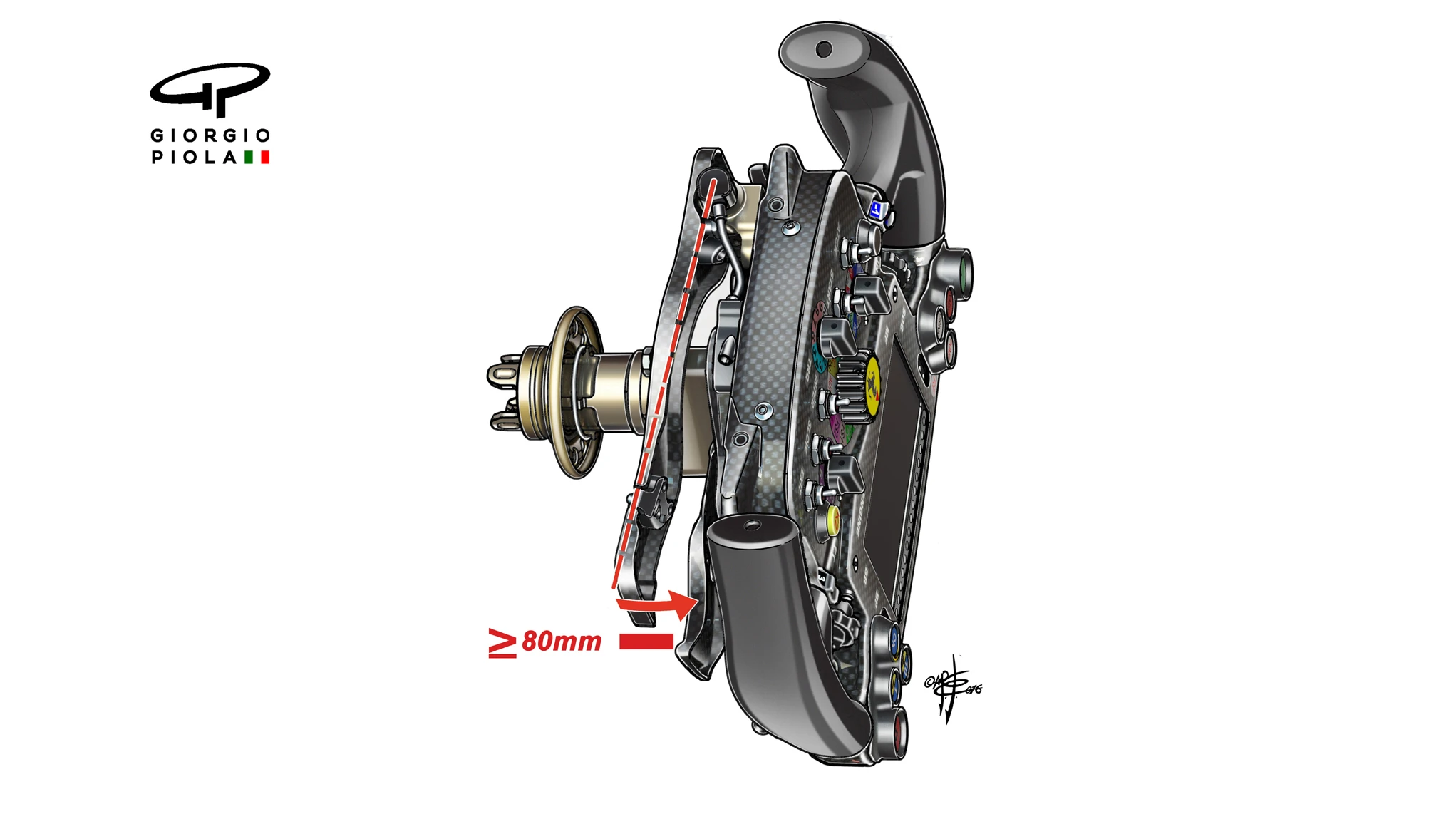
Some initial wheelspin is essential in getting the massively powerful car underway, as the spinning tyres can be used almost as a second clutch, reducing as the car’s speed builds to the point where all the power can be transmitted to the road. But too much wheelspin and you’ll be making lots of smoke but not achieving much forward momentum.
Judging that trade-off and how to get it right is the job of the driver, and a crucial part of that is feeling where the bite point of the clutch is – the delicate point where it’s just about to disengage.
The driver’s judgement of this has become essential since 2016 when the FIA banned the automated bite point clutches that had become the norm.
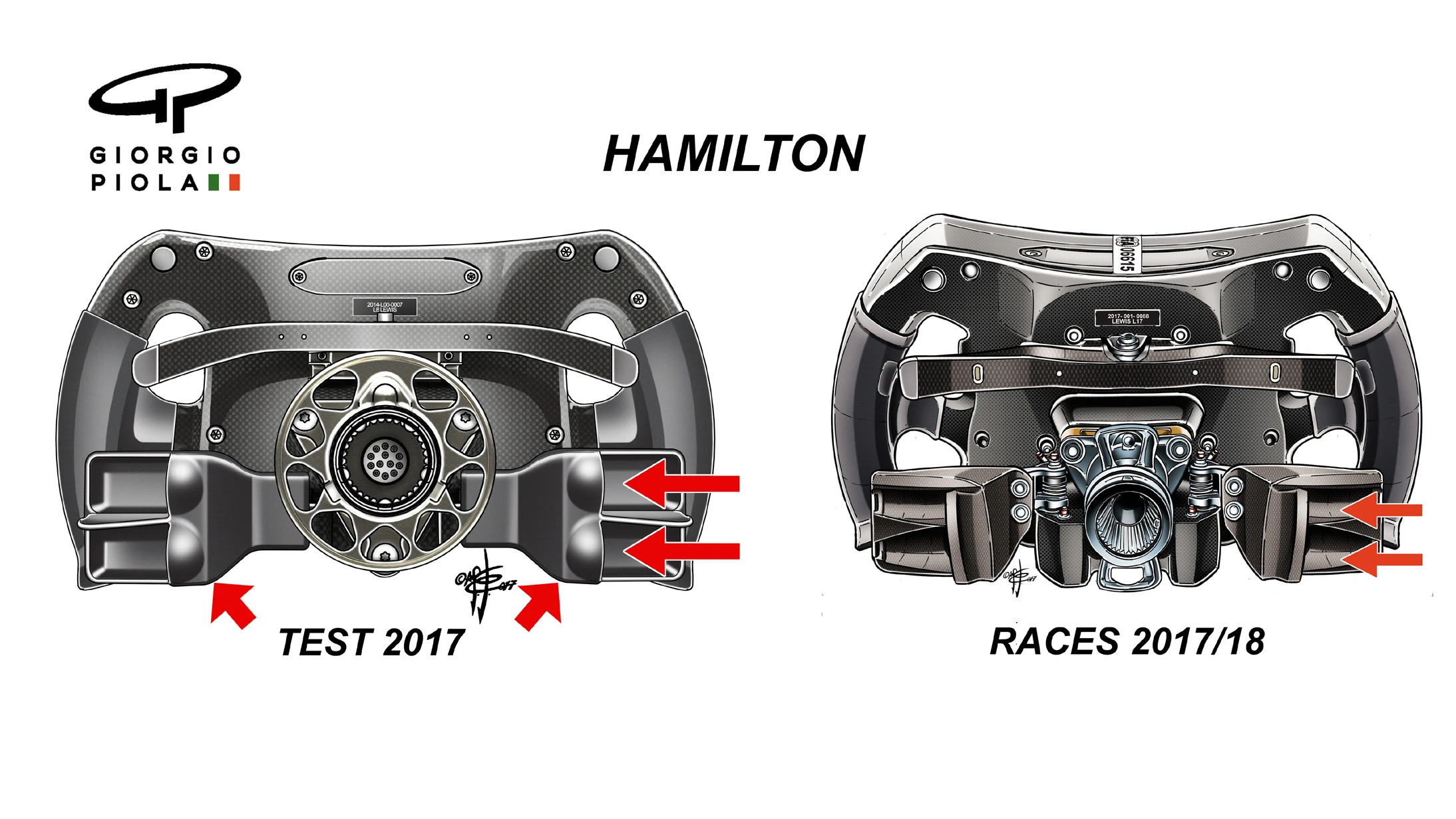
As such, drivers are forever searching for the best feedback from their clutch paddles and there is lots of variation even within teams as they attempt to tailor their set ups to find an advantage. Last year, Mercedes' Lewis Hamilton arrived at an arrangement with sculpted recesses for his fingers (see image above). This arrangement gave greater fidelity in the feel of the paddle’s movement.
Chief rival Sebastian Vettel appeared to have taken inspiration from that layout from Spain of last year, but has since made several other changes, including an extremely intriguing recent update…
How Seb’s steering wheel set-up has evolved
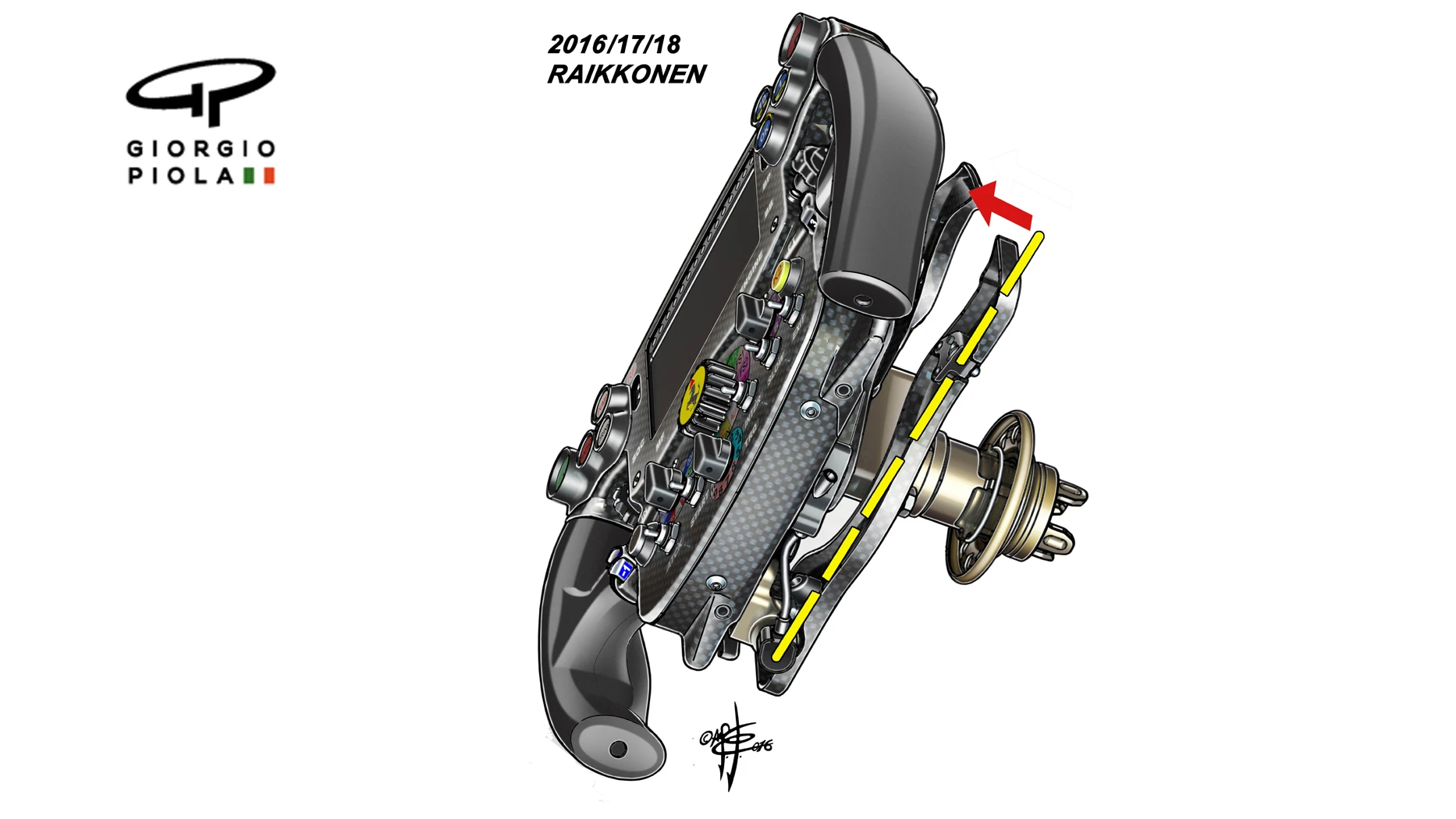
In 2016 Ferrari introduced an elongated clutch paddle (highlighted in yellow) to give the driver enhanced judgement in feeling for the clutch bite point. This was in response to newly-introduced FIA regulations that outlawed the previous system whereby a separate paddle could be set to give a pre-programmed bite point. Vettel and Raikkonen used this system.
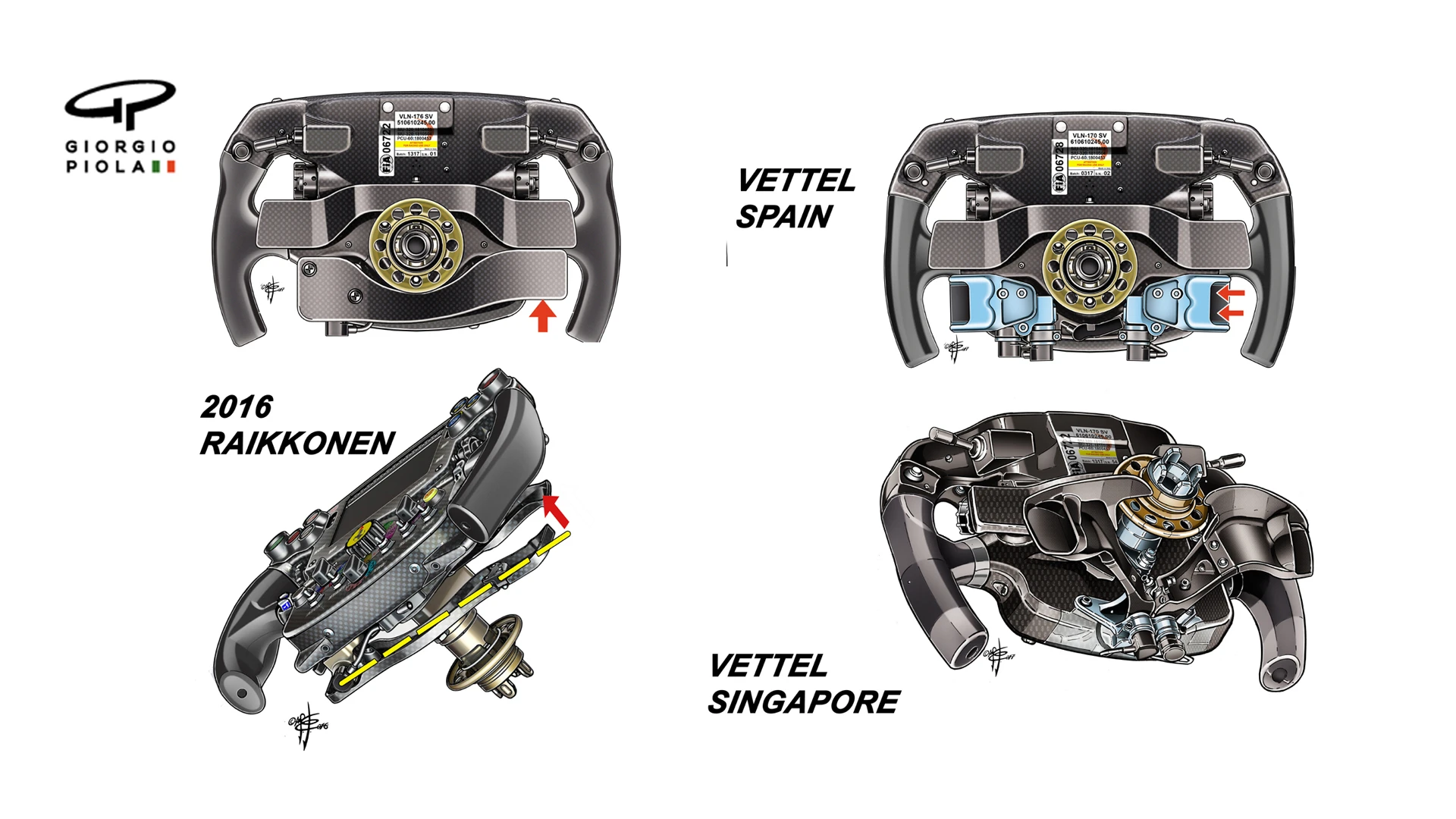
In 2017, each driver began to follow their own path more on steering wheel set-up. On the left side of the picture above is Raikkonen’s standard Ferrari wheel (showing gearshift paddle towards the top of the wheel and clutch paddle beneath it). He has used this set up since the beginning of 2016.
On the top right of the picture above is the wheel Vettel first used in Spain 2017, with the enhanced finger inserts on two separate titanium levers, one each side. From Singapore ’17 Vettel used a refined version of this (shown in the bottom right of the picture above), fashioned in carbon fibre.
But from the very next race (Japan) he reverted to the standard Raikkonen-style wheel without the separate finger inserts. Interestingly this came immediately after Vettel’s disastrous start at Singapore where, after a poor getaway off the line, his defence of his position caused him to be involved in a three-car accident also involving Raikkonen and the Red Bull of Max Verstappen.
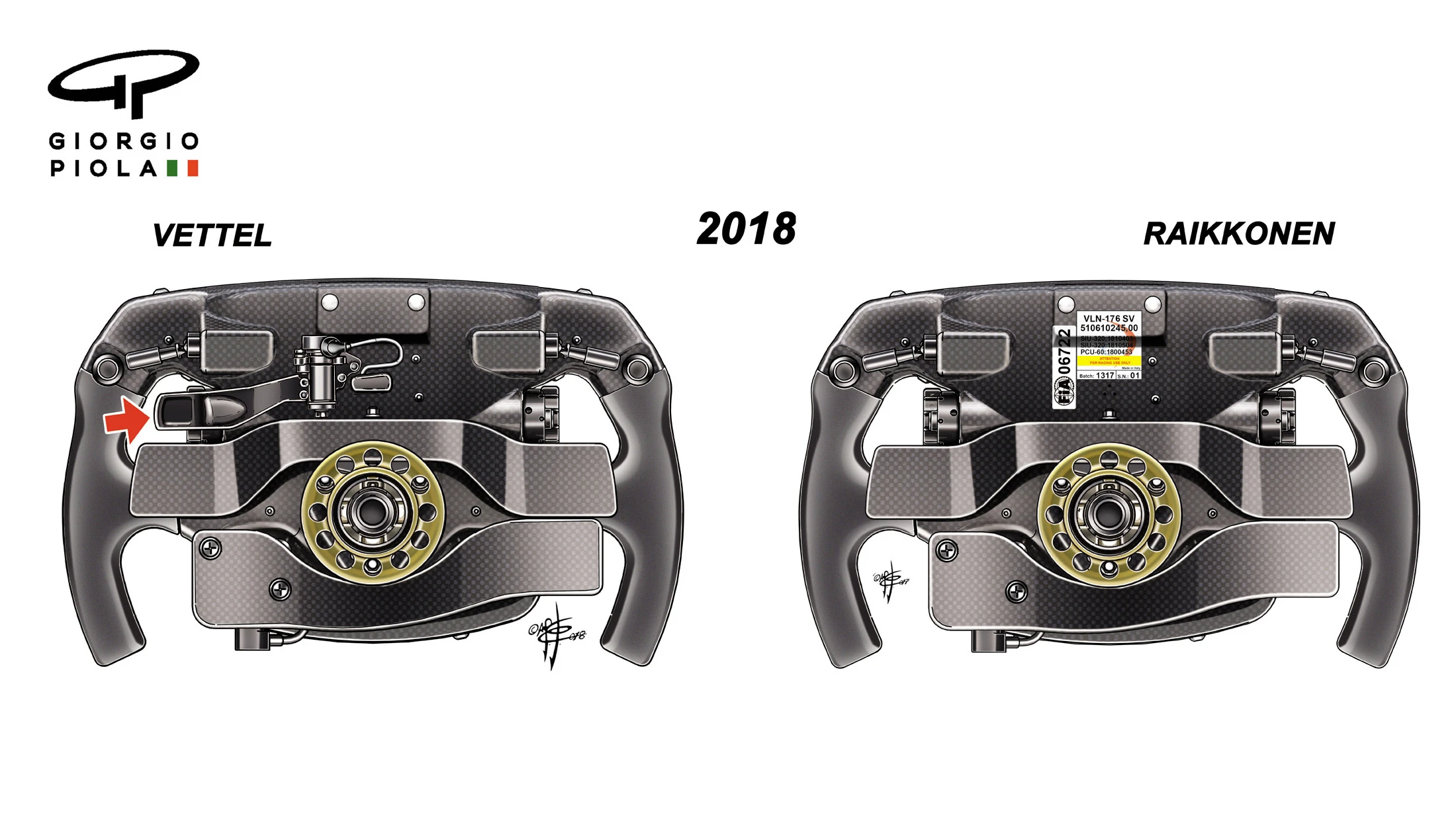
In 2018, Ferrari's drivers continue to use different set-ups. Above you can see the rear faces of Vettel's (left) and Raikkonen's (right) wheels. The key thing to note is that Vettel’s has an additional mini-paddle operated by his right hand above both main paddles. Intriguingly the function of this mini-paddle has not yet been established - but you can bet rival teams are keen to find out!
Next Up
Related Articles
 Albon names moment he's most proud of from 2025
Albon names moment he's most proud of from 2025.webp) End Of Year Reports 2025Aston Martin’s best and worst moments from 2025
End Of Year Reports 2025Aston Martin’s best and worst moments from 2025 Verstappen reflects on Mercedes talks and F1 future
Verstappen reflects on Mercedes talks and F1 future Watch as the F1 grid does Secret Santa for 2025
Watch as the F1 grid does Secret Santa for 2025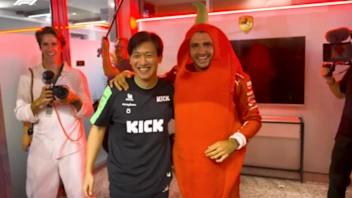 The best moments from F1 Secret Santa over the years
The best moments from F1 Secret Santa over the years ExclusiveHow APXGP was brought to life by costume designer Julian Day
ExclusiveHow APXGP was brought to life by costume designer Julian Day